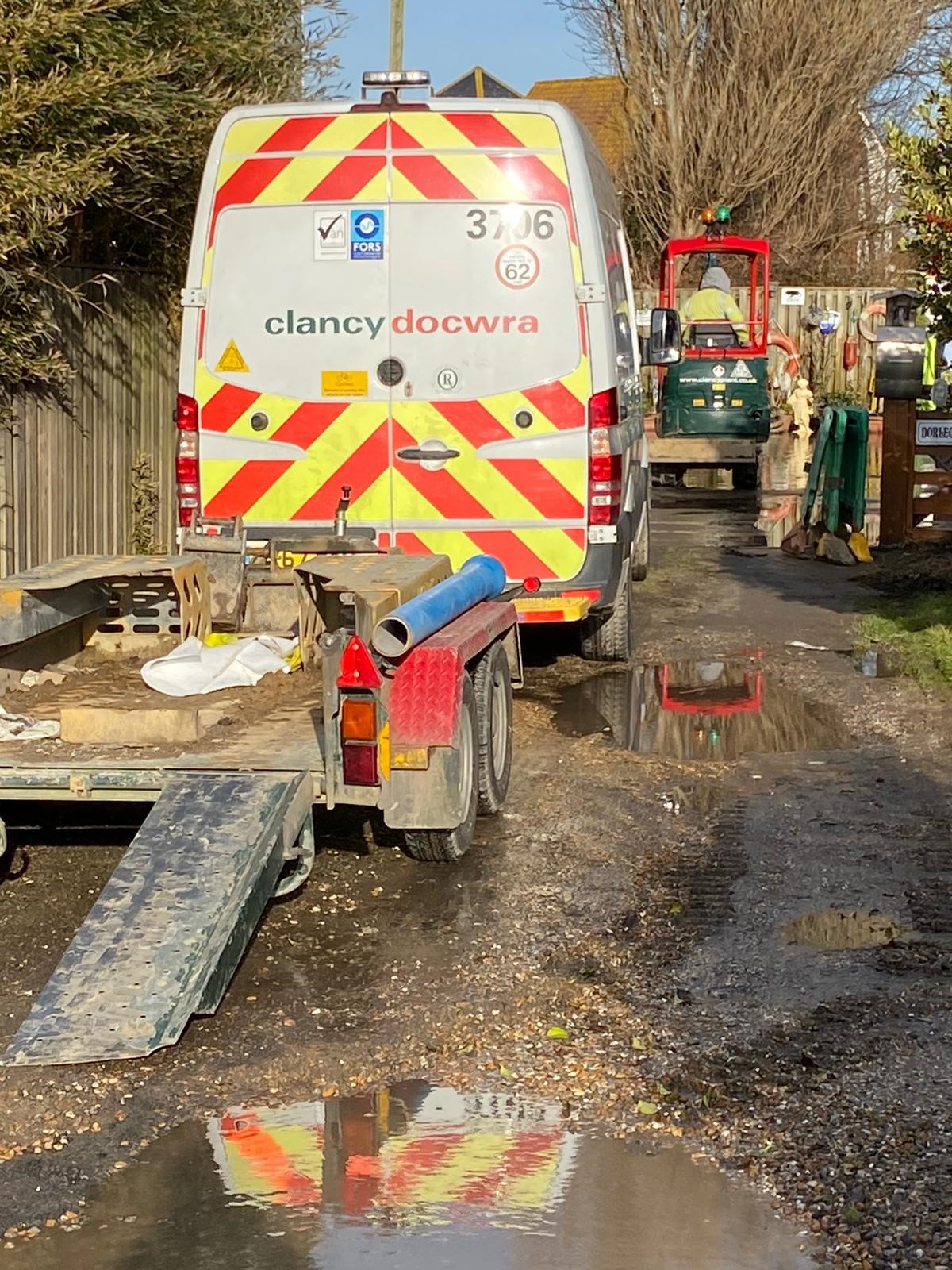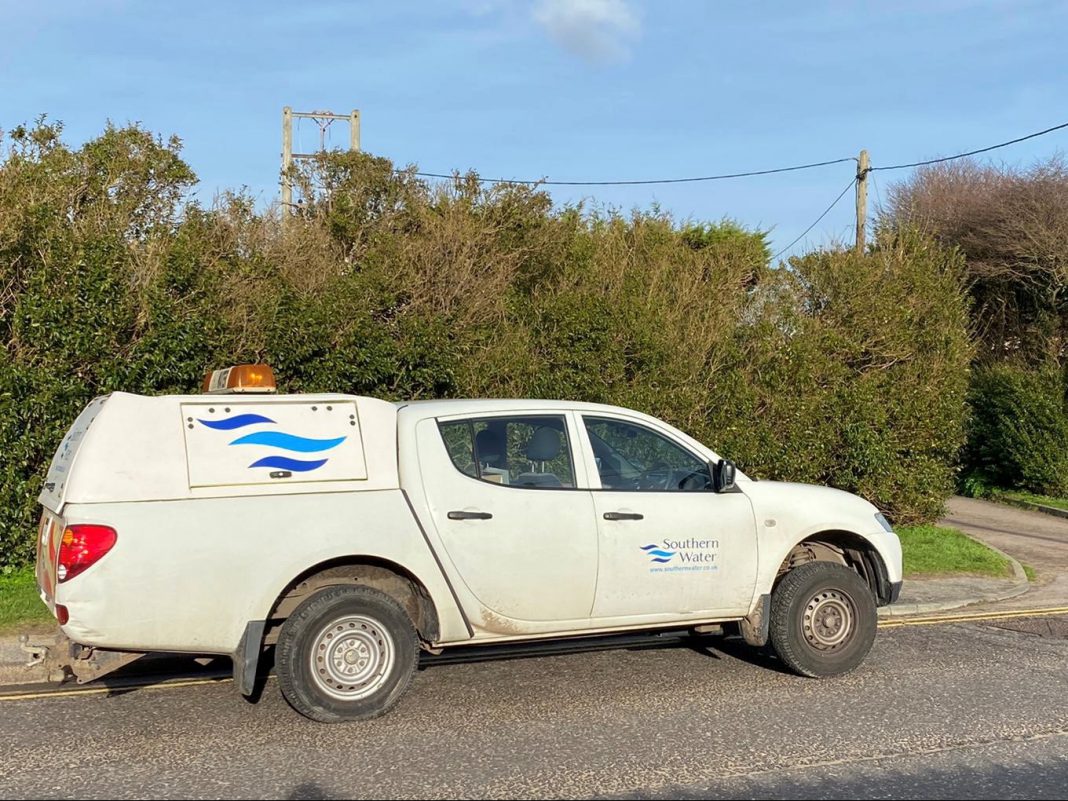After days of constant rain, the local area appears largely submerged in places as the accumulated surface water has nowhere to go. Fields are waterlogged, and grazing sheep follow their natural instincts and head for the highest point, particularly noticeable when coming from Rye towards Camber.
However in Camber itself, last Sunday, January 17, there were water problems of a different sort as residents in Links Way awoke to find their gardens flooded and with at least one garage also under several inches of water.
Southern Water were alerted and a team dispatched. Upon arrival, the assessment concluded a serious leak had developed in the mains water pipe, deep below the surface. Southern Water turned off the main supply at around 11:45am rendering the whole of the Whitesands development and nearby Scott’s Acre, as well as other parts of Camber, without any water supply.
As one resident commented: “A loss of water supply is always a difficulty, but in a pandemic with the requirement for increased hand washing following the Hands – Face – Space dogma this is a particularly worrying situation for residents to be facing”.

The Southern Water website had updates posted during the day and at 5:19 pm the update read “most customers are now back in supply and our repairs are progressing. We will soon have an update for our vital work in TN31 7RD, Links Way. Thank you for your understanding while we resolve this issue”
There had been growing concern, particularly for any elderly residents, that if the supply could not be resumed, Southern Water may be required to set up a collection point in the village for bottled water, within a possible statutory period of four hours from the loss of supply, and with the added complication for the statutory social distancing requirements to factor into the process.
“Water, water, every where, nor any drop to drink” seems an appropriate quote, taken from the famous poem, “Rime of the Ancient Mariner” by Samuel Taylor Coleridge.
Image Credits: Richard Byham .



